Text
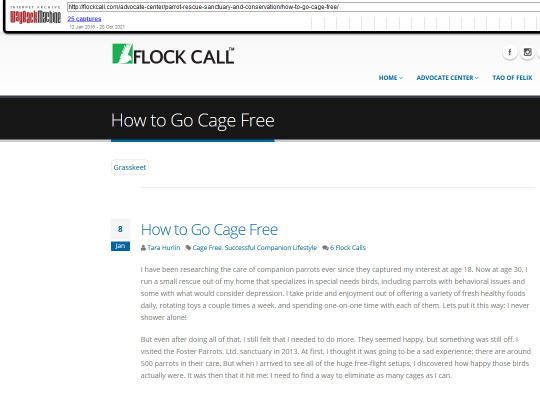
I was browsing my bookmarks, and found a good one that I didn't remember... and that turned out to be gone. I ran it through the Wayback Machine, and turns out the site has been down for a few years.
So, for my own sake and for posterity, I am posting it here, because it is useful information.
How to Go Cage Free
Tara Hurlin
I have been researching the care of companion parrots ever since they captured my interest at age 18. Now at age 30, I run a small rescue out of my home that specializes in special needs birds, including parrots with behavioral issues and some with what would consider depression. I take pride and enjoyment out of offering a variety of fresh healthy foods daily, rotating toys a couple times a week, and spending one-on-one time with each of them. Lets put it this way: I never shower alone!
But even after doing all of that, I still felt that I needed to do more. They seemed happy, but something was still off. I visited the Foster Parrots, Ltd. sanctuary in 2013. At first, I thought it was going to be a sad experience; there are around 500 parrots in their care. But when I arrived to see all of the huge free-flight setups, I discovered how happy those birds actually were. It was then that it hit me: I need to find a way to eliminate as many cages as I can.
Even if they are born in captivity, parrots are wild at heart. They are not domesticated animals; their brains are not wired for life in a cage. Depending on the bird, some think of their cage as a safe place to go to sleep and eat, but others act out, get depressed or start feather picking from boredom. The huge, most important part to consider when thinking about going cage free is (pay attention): You must know your bird, and if you have a flock, you absolutely must know your flock.
It took about a year for my rescue, Hurlin’s Parrot Rescue, to convert to going mostly cage free, and we are still changing things weekly. Keep in mind that we have a flock of 20, and it is a slow process because I allowed everyone to adjust at their own pace. In the beginning, I built jungle gyms hanging from the ceiling out of untreated manila rope. I hung a variety of toys, and they used that as a supervised playtime area – supervised so I could learn who may get along with who, or who was going to be a issue with other birds. As an important note: The large birds such as the Macaws are always kept in separate rooms, the Cockatoos in another separate room, and then the Amazons and African Greys in another.
The next step was to add large hanging perches made out of bird safe woods such as poplar, maple, untreated but de-barked pine, and Manzanita wood. It is important to hang all items with either stainless steel chain or plastic chain, depending on your birds (many will chew plastic chain). I installed dishes directly to the stands and hung toys from the chain so they could reach them. Who got to try out their cage free setup first was based upon each individual’s behavior during the supervised playtime trials. For example, I started with the more shy birds that would need more time to establish their territory, let them get situated, then moved on to the Timneh African Greys who had already established their flock. All the while, I routinely weighed each bird to make sure they were maintaining their weight and not losing due to any stress that may be associated with the big changes. My flock personally had no weight concerns during the transition, but better safe than sorry.
[missing image]
When choosing your chain, also make sure that it is safe for little birdie feet. There are certain types known to trap toes.
Meanwhile in the Macaw room, I hung all five of their ceiling play stands in the same day and moved the cages out. Shower curtains were also hung on the walls to assist in their giant poops and food flinging. I did this transition more suddenly because everyone was already used to each other; most had been in the same room for over a year. There is one handicapped Green wing Macaw in this flock, Paco, whose feet were so badly injured that they are paralyzed. Even she is cage-free: I made a play stand that works for her from hula-hoops wrapped in fleece fabric. This works wonderfully, since she is unable to climb or perch, she would just sit in the bottom of a cage all day and crawl through any poop. I had to wash her blankets and bathe her daily. Now she just aims her butt off of the play stand and poops on the papers like everyone else, usually with a little happy dance afterwards!
[missing image]
Even handicapped birds have the potential to live cage free, like Paco the Green Wing Macaw.
During the transition, only a few problems occurred: My Scarlet Macaw, Booboo, who is normally a high-anxiety bundle of nerves and plucks herself accordingly, did pluck her feathers during the first week of the change. Aside from being more nervous than usual, she otherwise seemed happier than normal and in bright spirits, and even began to play with toys – something I never saw her do before. She has now fully adjusted and stopped plucking (until another hormone season comes around, most likely).
There are four birds who unfortunately can never be cage-free, but I found this out in the very beginning during supervised play times. One is our male Eclectus, who puts a lot of effort into chasing down the Amazons, and in turn his friend Velvet also cannot be cage free, because she will find a dark corner and get “nesty”, which is something that we avoid here. The Eclectus species also has different dietary needs. Another caged bird is Toby, our “hot” yellow-nape Amazon, but that was common sense and expected, as he is highly hormonal to the point of unpredictable attacks. And the fourth is Buddy the Red Lory for obvious reasons: he’s a completely different species with different dietary needs, and he is a little guy that could easily get hurt.
About three-to-four months after switching to cage free, there is one bird in particular, Spooky the Timneh African Grey, who began to claim to entire room as his territory and bully the other birds, so as a precaution he maintains a cage while we are not home, but the door is opened at all times when we are home. His setup may or may not go back to cage free again in the future. This is a great example of how flock dynamic can change over time, and you as the caretaker have to be prepared to make any changes that come with it. For me, that was regretfully adding one more cage to the bird room, making five cages total – not bad at all if you consider the flock of 20.
I often get the question of “what if a bird gets adopted, or needs to join the flock?” Similar steps will be taken if another bird is relinquished to our rescue and has the possibility of going cage free. Of course, we maintain our quarantine procedures; our quarantine room is an entirely separate room from any of the other bird rooms. Then, once we are positive the new bird is healthy, he or she is brought into the bird room in a cage to gage reactions from the flock and the newbie. From there, the new bird can move to an open-cage status, then possibly cage free. It is important to note that the majority of birds that are easily adoptable into approved homes will not transition to our cage-free flock. This will avoid stress on them if they find a new family, and it will prevent stress on our own flock. With every bird that comes and goes, the flock is affected and the dynamic changes. We take the time to get to know each bird before making any decisions – as much time as it takes. It is our responsibility to do what is in the individual’s best interest, and for our existing flock.
As for maintaining the cage free setup, new toys, swings, boings and other perches are hung and changed out regularly to keep everyone busy. Most of the birds are flighted and will explore the room, but they always return to their “safe spot” on their own play stands for food, water or sleep (with the exception of a few that prefer sleeping up on the ropes).
[missing image]
It's important to keep your flock busy by adding random foraging areas and rotating toys.
I wish that I could tell everyone that eliminating cages was all sunshine and rainbows – a piece of cake – but it takes a lot of thought and even more work! It may not be for every flock, and I can’t make that decision for you because only you can truly know your birds. Only you know what your setup is capable of and what is realistic for you.
What I can say is that I have no regrets. I have never seen my birds happier. The sparkle in their eyes shines brighter; they chatter more and interact with each other more, even just vocally from across the room. The vibe in the room is much more lively and happy, and I no longer feel the guilt of seeing so many cages lined up around the walls like little jail cells.
A few birds in particular have completely turned around: for example, Ariel, a bird who was locked in a cage for ten years and very difficult to handle due to her mood swings (I self-diagnosed her as being bipolar with possible depression), now constantly asks for me to hold her and accepts preening, almost to the point of cuddling. The first time she did this is a moment I will never forget; it was the kind of moment that reminds a rescuer why they rescue in the first place. Tears of joy filled my eyes. Another change happened in my African Greys, Shelby and Remy. With the cage-free setup they go wherever they please, and that often involves following me wherever I am in the house, which is something I love. They fly back down to their rooms when they decide it is bedtime. Their confidence has become higher from having that independence.
[missing image]
Ariel is a more emotionally stable bird after going cage free.
Another perk for me personally, aside from the happy aura radiating throughout my bird rooms, is that this setup is very low maintenance compared to having cages. I spend less time scrubbing cages bars and bottom grates, which means I can enjoy more time interacting with the flock. What used to take a full day to clean now only takes a couple of hours – and that is a full on OCD bird room scrub down. We have leftover rolls of 48” wide paper donated by our local newspaper distributor. The paper is cut into large sections to completely cover the floors in each room. Smaller sections are laid over the main paper for the extra poopy spots for ease of changing it, and it makes the larger portion last longer. I sweep daily, and I wipe the walls and change papers in their entirety a couple times per week.
[missing image]
Be prepared to sacrifice your wood trim... And doors!
I still continue to make changes to the bird rooms, and this will be an ongoing thing. Another large phase that will take place in spring/early summer 2016 is switching out all of the wood trim for tile or stainless – whichever I find the most cost effective (or the least ugly). Lucky for the flock, I didn’t care for the wood trim we had in those rooms, anyway!
[missing image]
A glimpse of the mostly cage-free setup. Buddy the Red Lory's cage is to the left, and to the right (not pictured) are the other two cages for Velvet and Shifu, and Toby.
[missing image]
Another shot of the same bird room showing the other two cages. An air filter and backup heat (vented to the outside) is also in the photo.
Main Points for going cage free:
Know your birds.
Be patient and observant.
Weigh your birds regularly to make sure they are maintaining weight and health.
Be prepared to make changes as flock dynamics change.
Adjust with the flock; you are part of it.
You better not care about your trim or possible furniture in the room, or have plans to change to un-munchable trim, like tile.
Keep them busy by changing out perches, toys and foraging activities. It’s like having a caged setup, but on a larger scale with no bars, so you have to get creative.
Enjoy watching your flock be a flock, and take pride in being part of it.
3 notes
·
View notes
Photo

What’s in those pellets?
It’s a wonder to me how while a one-sided diet of dry seeds for parrots is rightly criticized, pellets are sung to the skies as the be-all and end-all as a pet parrot diet.
While in theory it’s a good idea - parrots are picky eaters, and if you can squeeze all that they need in a pellet form, you can rest assured that they are getting their daily nutrients, even if they scorn greens or even fruit and nuts in their fresh form.
But it seems that very rarely does anyone actually look at what’s inside these pellets. Commercial dog and cat kibble have had high scrutiny put on them, forcing companies to improve (and a lot of owners straight up going to feeding raw) but parrot pellets have not had much of the same.
Let’s start with what I fed my Meyer’s parrot when I got her, and many years after: Hagen Tropican. I don’t know about America and the UK, but it’s quite popular in my country, and has a delightful, fruity smell, without any of the unnecessary colorings.
Corn, Soybean Meal, Wheat, Dehulled Peanuts, Brown Rice, Dehulled Sunflower Seeds, Canola Oil (preserved with mixed tocopherols), Calcium Carbonate, Lecithin, Oat Groats, Dried Tomato, Flaxseed, L - lysine, Alfalfa Nutrient Concentrate, Choline Chloride, DLmethionine, Beta-carotene, Biotin, Vitamin E Supplement, Niacin, Calcium L - Ascorbyl - 2 -Monophosphate (source of Vitamin C,) Zinc Oxide, Manganous Oxide, D-calcium Pantothenate, Vitamin B12 Supplement, Rosemary Extract, Copper Sulfate, Pyridoxine Hydrochloride, Thiamine Mononitrate, Inositol, Folic Acid, Vitamin A Supplement, Calcium Iodate, Sodium Selenite, Vitamin D3 Supplement.
To recap, the main ingredients are corn, soybeans, wheat, peanuts, rice, sunflower seeds, and canola oil. If I fed my bird a homemade mix of this, I would rightly be shamed for it.
See here on the potential harms of feeding parrots soybeans:
https://www.bestbirdfoodever.com/2022/01/never-feed-birds-soy/
https://birdcageshere.com/2022/03/13/can-parrots-eat-soybeans/
As for another pellet brand, Nutribird is what my medium sulphur-crested cockatoo got with him when I took him home from the breeder (in 2006), and I had it as the base for both of my birds for a few years, occasionally still buying Hagen Tropican.
cereals, nuts (peeled peanuts 10%), derivatives of vegetable origin, vegetables, seeds (5%), minerals, oils and fats, fruit (apple 5%*), sugars, MOS, yucca
*dehydrated fruits and vegetables, % equivalent before drying
When browsing dog food, I would never accept an ingredient list this flimsy, and this is from the manufacturer’s website. “Derivatives of vegetable origin”? So what is it?
Again, the main ingredients are cereals, nuts (10% peanuts being 10% of the pellets and not of the nut content, I assume), the aforementioned “derivatives”, “vegetables” and seeds.
So how is this any better than any random seed mix with cereals and peanuts?
Here was another brand I found on a list of “best parrot pellets”, and it looks the same. Corn, rice, soybean, wheat, oatmeal, sugar and canola oil were the first ingredients.
Zupreem and Roudybush are brands I’ve heard of a lot, and they look only like more of the same.
Adding this after actually finishing the rest of the post, TOP’s is the only brand to actually impress me with “real food” as its main ingredients.
Now to the most praised of all parrot pellet brands, Harrison’s bird food. It is widely considered “the best”, and sold by veterinarians (which is not in itself an indicator of anything other than that the vets have a business deal with the company).
But what’s in it?
As for the adult lifetime form:
*Ground Yellow Corn, *Ground Hulless Barley, *Ground Soybeans, *Ground Shelled Peanuts, *Ground Shelled Sunflower Seeds, *Ground Lentils, *Ground Green Peas, *Ground Rice, *Ground Toasted Oat Groats, *Ground Alfalfa, Calcium Carbonate, Psyllium, Montmorillonite Clay, Spirulina, Ground Dried Sea Kelp, Vitamin E Supplement, Sea Salt, Vitamin A Supplement, Vitamin D3 Supplement, Niacin Supplement, Vitamin B12 Supplement, Riboflavin Supplement, d-Calcium Pantothenate, Pyridoxine Hydrochloride, d-Biotin, Thiamine Mononitrate, Sodium Selenite.
So to repeat the main ingredients in short form... corn, barley, soybeans, peanuts, sunflower seeds, lentils, green peas, rice and oats.
The “high potency” product is not any better.
*Ground Shelled Sunflower Seeds, *Ground Hulless Barley, *Ground Soybeans, *Ground Shelled Peanuts, *Ground Green Peas, *Ground Lentils,*Ground Yellow Corn, *Ground Rice, *Ground Toasted Oat Groats, Psyllium, *Ground Alfalfa, Calcium Carbonate, Spirulina, Montmorillonite Clay, Ground Dried Sea Kelp, Vitamin E Supplement, Sea Salt, Vitamin A Supplement, Vitamin D3 Supplement, Niacin Supplement, Vitamin B12 Supplement, Riboflavin Supplement, d-Calcium Pantothenate, Pyridoxine Hydrochloride, d-Biotin, Thiamine Mononitrate, Sodium Selenite.
Sunflower seeds is the first ingredient, followed by barley, soybeans, peanuts, green peas, lentils, corn, rice and oats.
Other than the lentils and peas, I don’t see how any of this is any healthier than, again, any random seed mix. With potentially harmful soybeans thrown in. Yes, there are supplements included, that’s great, but you could add those yourself, and the main ingredients is the point.
“Harrison's Bird Foods were developed by avian veterinarians, leading aviculturists and top avian nutritionists to be the most nutritionally complete diet available.“
I don’t know... I am obviously not one of these, I am just interested in nutrition and care about my pets and not being scammed. But just looking at the ingredients, I am not impressed. This is not a mix of healthy seeds, nuts, fruits and vegetables, it’s mainly a mix of cheap cereals like wheat and corn, and ironically, the much-maligned sunflower seeds and peanuts. And soybeans.
No thank you, I will not return to feeding my birds a pellet-based diet, unless a genuinely healthy option turns up.
14 notes
·
View notes
Link
I took a look at this again, and found that the average (median) lifespan they showed is... quite strange, compared to the median age of the birds that were alive at the time.
No, really strange.
So in one group we have the birds that died after four years of age.
And in another group, we have the birds that were alive when the study was made (spring 2008). I am ignoring the third group, birds that died after one day of age.
I am looking at all the “common” parrots, like cockatoos, macaws, amazons, poicephalus, pionus... and in almost every case, the median age of the living birds is higher than the lifespan of the birds that died as adults, with the exception of the blue-eyed cockatoo, senegal parrot and yellow-shouldered amazon. (Also a couple where the two numbers are exactly the same.)
That means, that if the entire adult population in the study were to suddenly die, their median age at death would be higher than the ones recorded so far.
For an extreme example, 66 Tucuman amazons averaged 5.41 years at death - and now we're talking those who survived PAST four years to begin with. And the 10 living birds average 18.96 years. If those 10 birds died at that time, their median age at death - 18.96 years - would be vastly higher than those previously deceased.
Only 10 living birds is not a lot, so let’s look at a more numerous example, the blue and gold macaw. There were 1297 birds that died after four years of age, averaging 12.55 years. There were 273 birds still alive, at 20.78 years median age.
So... something is fishy about the deceased birds, and it shows the birds of the present time (as of 2008) will have far longer lives than seen in the previous 200 years. Meaning, the median lifespan found in this study is probably not reliable for the future.
This isn’t “new” as the post above is from 2011, but I was curious if there were any actual lifespan studies on pet or zoo parrots, and found this first.
Here is the link to the actual study: https://zslpublications.onlinelibrary.wiley.com/doi/full/10.1111/j.1469-1795.2011.00477.x#t2
From what I have learned from lifespan studies on toothed whales, I know talking about lifespan can be very, very difficult.
(Apologies in advance that this post got so long-winded.)
———-
For example, when looking up beluga whale “average lifespan”, you can find figures anywhere from 13 to 80 years, both claiming to be “average”. But what does that mean?
Rather, 13 years is what they found the lifespan of belugas to be counted from birth, including all calves that die (which is a very high number). 80 years being the estimated maximum, and then some perhaps less educated person put that as “average lifespan” on a website about whales.
I think the reason for this comes largely because we judge from those two species closest to us; humans and dogs. Human lifespan? Eh, 80 years. In many countries today, a girl has a life expectancy at birth of perhaps 83 years. That is also very close to a “maximum” lifespan (say 90 years), with the exception of some outliers that live far longer. When you’re 83-90 years old, you’re quite ripe, as a human. So “maximum” and “average” is very close, in humans.
As for dogs, 11 years is about average. It’s also old, with some living a bit longer, say the maximum is about 15 (again, with the exception of some remarkable individuals). So, average and maximum, pretty close.
As for beluga whales, the maximum may be about 60-65 (I frankly don’t know where they got “80″ from, as the oldest small whales and dolphins tend to die off in their early 60s, I don’t know of any confirmed older than 65), but the average adult dies in its 30s, and life expectancy at birth is ~13-15.
So the maximum is about twice the typical lifespan for an adult which is about twice the life expectancy at birth. You see how this is complicated?
I talk about whales here because it’s what I know best.
To compare with humans, in a more “wild” setting (our ancestors), the maximum we have today of ~115 is twice what our ancestors would start dying at (55 would be quite old and a lot of them would be dead, but they could still sometimes live to 90), and our life expectancy at birth was closer to 25-30, due to high infant mortality. Three completely different figures, in the same way as the belugas.
So allow me to wonder when I read this study on parrot lifespan in zoos. First… and this is the same as with whales in zoos… the older animals will have been caught or born in a time when we didn’t know how to care for them very well (and this study goes back to animals born in the early 1800s). They may have spent their first several decades, or even their entire lives, with a poor diet, habitat or care.
Any animal born in the 1990s or 2000s, that is dead today… obviously didn’t get to live a long time, for whatever reason. Animals born in 2000 or 2010 that will live to the age of 50 or beyond, will not yet die and be included in a study like this for a long time, so they are not included. Again, complicated. (And which is why, when I calculate lifespans, I use strict rules for time of birth and death, and don’t mix those groups, like animals born in 1950 with those born in 1990.)
I know these people are professionals and I am not, but each study is different, and different methods may be used. I am just writing all this to explain how lifespan studies are complicated and may not always give a true picture.
———-
To the point then, I am confused regarding the cockatoos:
It says the oldest Moluccan cockatoo lived to an age of 92 years, but that the average lifespan for birds who survived to adulthood was a mere 9.5 years.
The oldest greater sulphur-crested lived to nearly 73 years, and the oldest lesser sulphur/yellow-crested lived to just under 40 years. Okay. And for both species, the average for those who survived to adulthood, was 8-10 years.
This doesn’t make any sense. Putting these three species together, all with the same average in the end, the maximum was ~68.49 years. That puts the average (not at birth, but for those who survived their first four years) at a mere 14.2% of the maximum lifespan.
I assume zoo parrots would be spared from many of the dangers pet birds are exposed to (open windows, pet cats and dogs, open water, flying into windows, being caught in doors, etc.), so this really makes me wonder at the causes of death.
I could try to make an unprofessional little study by looking around forums where people report their parrots deaths at various ages. Again, it would be very unprofessional and could not be directly compared (no two studies can ever truly be compared side by side, unless the exact same methods were used), but it would be interesting to see, because I just find this so unlikely.
Looking at the macaws, it’s interesting as their maximum ages were not as high as those of the cockatoos, but their average was better, in their 20s or near the 20s. The highest average (of the birds who survived to adulthood) with a reasonable sample size was of the red-tailed amazon, at 21.93 years, from a sample of 15 birds. (And makes me wonder even more why so many cockatoos died young?)
It does say the oldest Meyer’s parrot lived to be 31 (and the average was 9), but I know for a fact that Meyer’s parrots have lived to be over 40 (outliers, however). I guess I can be happy that my Meyer’s is now 18. While data on her species is very poor, I expect her to maybe live to her 30s.
My white-bellied caique got sick and died a few months before his fourth birthday. Looking at his species here, it says this:
34 birds total. The oldest lived to 23.14 years. Total average lifespan was 4.97 years, with 8 birds dying before the age of 4.
The remaining 26, who survived to the age of 4 and beyond, died at an average of 5.79 years. However, the additional 3 birds alive when they published the study in 2008, averaged 20.28 years. Huh.
(Three is a tiny sample size and you can’t compare living ages with the lifespan of the dead, but it’s funny that they averaged so close to the maximum.)
Anyway. I will be looking at more studies and surveys that might exist of captive parrot lifespans, because this is interesting, and while I doubt 9-10 years is actually a normal lifespan for large cockatoos, I’m certain “50-100 years or more” only belongs to outliers.
13 notes
·
View notes
Link
Second link: https://www.roadsidezoonews.org/post/dozens-of-parrots-found-dead-at-washington-bird-sanctuary
Oh dead God... I was just going to the website of the “Cockatoo rescue and sanctuary” to look at some species info, since it was always good, and found the site was down. I found them in December of 2007(!), and while the situation seemed a bit weird, they always had very good species- and even subspecies-specific info.
Now it turns out, the owner died a month ago, and the birds were left completely without care. It seems only one got out, while all the others “had been dead for some time”.
Here it says she had “50-some” birds, but from the website I recall specifically her saying she had over 70 Moluccan cockatoos alone, and was still accepting more, while she did not accept more umbrellas, Goffin’s, or blue and gold macaws (though that had stood for years and may be very outdated).
There were, on the website, specific “colonies” for five different kinds of sulphur-crested, for Moluccans, umbrellas, Goffin’s, Ducorp’s, Major Mitchell’s, galahs, bare-eyeds, for killer cockatoos, for special needs birds, for macaws, for Amazons, for greys... were they all gone already?
I said it was “a bit weird” because she did not accept volunteers, visitors, or even taking a picture of someone’s bird to show to the former owner, something that made many suspicious.
This also reminds me of when World Parrot Refuge’s owner died a few years ago, with no plan of where her 600 birds were going to go. At least then, other people were involved, and no birds had to suffer and die.
It is beyond me how you can be ailing and sick - cancer is not something that kills you in a matter of weeks, you have time to plan - and not make any effort to find anyone else to take your animals.
It’s heartbreaking to see.
“The neighbor stated that they had troubles in the past with the noise from the birds, but the birds stopped making noise sometime in the past year, and now for the past several months they have had a rat problem,” believe to result from rats “coming from Rutledge’s property.”
I don’t even know what to say. After she called 911, she refused to let anyone help her live animals indoors, and insisted she was feeding “her birds” outside, where only feathers and feet could be found. They had been dead since last year. I feel absolutely sick to my stomach, though I know this is not the first time something like this happens, when someone previously might have taken great care of their animals, then gets old and sick, and is too proud to accept help or admit mistakes. And the animals suffer and die.
3 notes
·
View notes
Video
youtube
Red birb does dumbbell training
5 notes
·
View notes
Link
I was just browsing parrot hybrids, and at first thought this was some rare species I had never seen before.
But as it says, it’s a rosella x lorikeet hybrid.
How is that even possible?
With this, the conure x mini macaw hybrid, the well-known serval x cat hybrids (Savannah cats), and a cockatiel x sulphur-crested cockatoo hybrid I saw once (on a parrot site, it was a pet in Australia and could not be any other hybrid), it’s well past time for people to realize that “species” does not mean “different animals that cannot produce fertile offspring”.
Forget species, even different genera and subfamilies can produce offspring sometimes. It shows, of course, that our feeble attempt to categorize life is an attempt at best, and that one can’t simply draw lines in nature and call it a day.
8 notes
·
View notes
Video
youtube
I am very much out of the loop in the pet-keeping world (I only follow a couple of animal-related channels on YT, and none about exotics), but I was watching a bunch of stuff about “PetTube” today.
I used to watch BB in 2015 (mostly old videos from years before), then quickly lost interest because of the... clickbait and shock factor. (”SNAKE BITE TO FACE” and fake blood splatter, anyone?)
But I didn’t know about this. The only “damning” things I had heard about him before, were criticism of scaleless reptiles, spider ball pythons, and the tiny tubs.
The rest is just damn awful.
And the video feeding the monitor was so obviously staged and cringe. “OMG I don’t know what to do!” You have owned thousands of reptiles for decades. How can you not know what to do?
Also, I’m joking now and I’m sure someone will take this out of context, but about YouTubers in general, about any topic... can we make it illegal, like introduce the death penalty or something, for using ALL CAPS or sudden SELECTIVE CAPS for absolutely NO REASON??!!
I hate it so much.
3 notes
·
View notes
Link
#pet tiger#pet tigers#big cat public safety act#big cats#conservation#tiger conservation#article#exotic pets#pro exotics
3 notes
·
View notes
Video
youtube
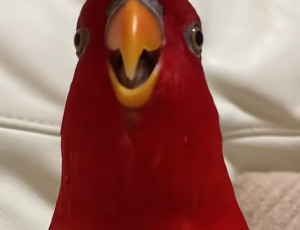
24 notes
·
View notes
Link
This isn’t “new” as the post above is from 2011, but I was curious if there were any actual lifespan studies on pet or zoo parrots, and found this first.
Here is the link to the actual study: https://zslpublications.onlinelibrary.wiley.com/doi/full/10.1111/j.1469-1795.2011.00477.x#t2
From what I have learned from lifespan studies on toothed whales, I know talking about lifespan can be very, very difficult.
(Apologies in advance that this post got so long-winded.)
----------
For example, when looking up beluga whale “average lifespan”, you can find figures anywhere from 13 to 80 years, both claiming to be “average”. But what does that mean?
Rather, 13 years is what they found the lifespan of belugas to be counted from birth, including all calves that die (which is a very high number). 80 years being the estimated maximum, and then some perhaps less educated person put that as “average lifespan” on a website about whales.
I think the reason for this comes largely because we judge from those two species closest to us; humans and dogs. Human lifespan? Eh, 80 years. In many countries today, a girl has a life expectancy at birth of perhaps 83 years. That is also very close to a “maximum” lifespan (say 90 years), with the exception of some outliers that live far longer. When you’re 83-90 years old, you’re quite ripe, as a human. So “maximum” and “average” is very close, in humans.
As for dogs, 11 years is about average. It’s also old, with some living a bit longer, say the maximum is about 15 (again, with the exception of some remarkable individuals). So, average and maximum, pretty close.
As for beluga whales, the maximum may be about 60-65 (I frankly don’t know where they got “80″ from, as the oldest small whales and dolphins tend to die off in their early 60s, I don’t know of any confirmed older than 65), but the average adult dies in its 30s, and life expectancy at birth is ~13-15.
So the maximum is about twice the typical lifespan for an adult which is about twice the life expectancy at birth. You see how this is complicated?
I talk about whales here because it’s what I know best.
To compare with humans, in a more “wild” setting (our ancestors), the maximum we have today of ~115 is twice what our ancestors would start dying at (55 would be quite old and a lot of them would be dead, but they could still sometimes live to 90), and our life expectancy at birth was closer to 25-30, due to high infant mortality. Three completely different figures, in the same way as the belugas.
So allow me to wonder when I read this study on parrot lifespan in zoos. First... and this is the same as with whales in zoos... the older animals will have been caught or born in a time when we didn’t know how to care for them very well (and this study goes back to animals born in the early 1800s). They may have spent their first several decades, or even their entire lives, with a poor diet, habitat or care.
Any animal born in the 1990s or 2000s, that is dead today... obviously didn’t get to live a long time, for whatever reason. Animals born in 2000 or 2010 that will live to the age of 50 or beyond, will not yet die and be included in a study like this for a long time, so they are not included. Again, complicated. (And which is why, when I calculate lifespans, I use strict rules for time of birth and death, and don’t mix those groups, like animals born in 1950 with those born in 1990.)
I know these people are professionals and I am not, but each study is different, and different methods may be used. I am just writing all this to explain how lifespan studies are complicated and may not always give a true picture.
----------
To the point then, I am confused regarding the cockatoos:
It says the oldest Moluccan cockatoo lived to an age of 92 years, but that the average lifespan for birds who survived to adulthood was a mere 9.5 years.
The oldest greater sulphur-crested lived to nearly 73 years, and the oldest lesser sulphur/yellow-crested lived to just under 40 years. Okay. And for both species, the average for those who survived to adulthood, was 8-10 years.
This doesn’t make any sense. Putting these three species together, all with the same average in the end, the maximum was ~68.49 years. That puts the average (not at birth, but for those who survived their first four years) at a mere 14.2% of the maximum lifespan.
I assume zoo parrots would be spared from many of the dangers pet birds are exposed to (open windows, pet cats and dogs, open water, flying into windows, being caught in doors, etc.), so this really makes me wonder at the causes of death.
I could try to make an unprofessional little study by looking around forums where people report their parrots deaths at various ages. Again, it would be very unprofessional and could not be directly compared (no two studies can ever truly be compared side by side, unless the exact same methods were used), but it would be interesting to see, because I just find this so unlikely.
Looking at the macaws, it’s interesting as their maximum ages were not as high as those of the cockatoos, but their average was better, in their 20s or near the 20s. The highest average (of the birds who survived to adulthood) with a reasonable sample size was of the red-tailed amazon, at 21.93 years, from a sample of 15 birds. (And makes me wonder even more why so many cockatoos died young?)
It does say the oldest Meyer’s parrot lived to be 31 (and the average was 9), but I know for a fact that Meyer’s parrots have lived to be over 40 (outliers, however). I guess I can be happy that my Meyer’s is now 18. While data on her species is very poor, I expect her to maybe live to her 30s.
My white-bellied caique got sick and died a few months before his fourth birthday. Looking at his species here, it says this:
34 birds total. The oldest lived to 23.14 years. Total average lifespan was 4.97 years, with 8 birds dying before the age of 4.
The remaining 26, who survived to the age of 4 and beyond, died at an average of 5.79 years. However, the additional 3 birds alive when they published the study in 2008, averaged 20.28 years. Huh.
(Three is a tiny sample size and you can’t compare living ages with the lifespan of the dead, but it’s funny that they averaged so close to the maximum.)
Anyway. I will be looking at more studies and surveys that might exist of captive parrot lifespans, because this is interesting, and while I doubt 9-10 years is actually a normal lifespan for large cockatoos, I’m certain “50-100 years or more” only belongs to outliers.
13 notes
·
View notes
Text
Sybil’s Den
If anyone here is a member of this forum, do you know what has happened? It’s been down for a week at least. Just a white error screen.
1 note
·
View note
Text
Parrots aren’t exactly difficult to care for (diet, humidity, temperature and such - simply to keep them physically healthy), it’s more that they are extremely intelligent (need lots and lots of enrichment and social interaction) and their natural behavior makes them challenging to live with.
I agree though, pigeons and smaller doves are much better suited as pets.
Just for fun: I looked up fruit doves recently, which are beautiful, colorful wild species of dove/pigeon, and they are truly difficult to care for, needing a wide variety of finely chopped fruits every day. Thus, they are very rare even among softbill enthusiasts. Not relevant to domestic pigeons, though.
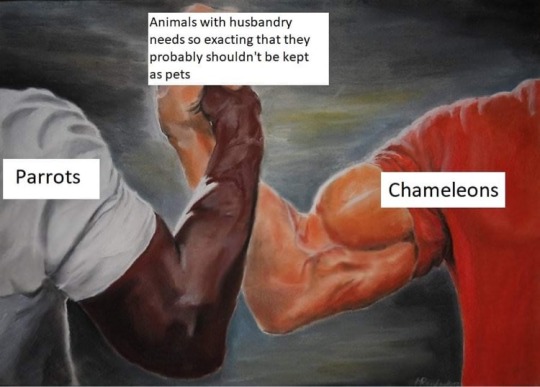
Don’t hate me but I really believe the world would be a better place if pigeons were the ubiquitous avian pet instead of parrots 👀
30K notes
·
View notes
Video
youtube
“So, it's like having a hyper-active, pre-menstrual, learning disabled, one-year-old gymnast who flings shit, breaks things, and never grows up.
Oh, and also has the temperature tolerance of a 99 y.o. woman. Is that about right?”
3 notes
·
View notes
Video
youtube
R.I.P Mischief
6 notes
·
View notes
Link
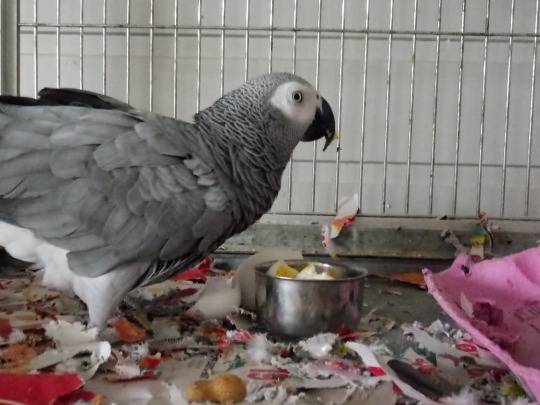
Vasco loves eggs, as I was informed by her former owner. I give her a whole boiled egg two-three times a week, and she gets so excited every time (seen in the above head lift, among others).
Saga (who I’ve had for seventeen years) had never tried egg in her life, as I never eat eggs myself (can’t stand them if I can smell them, see them, taste them or feel them in any way), but I give her pieces of Vasco’s boiled (chicken, not her own) eggs, and she loves it as well, especially the yolk.

0 notes
Photo
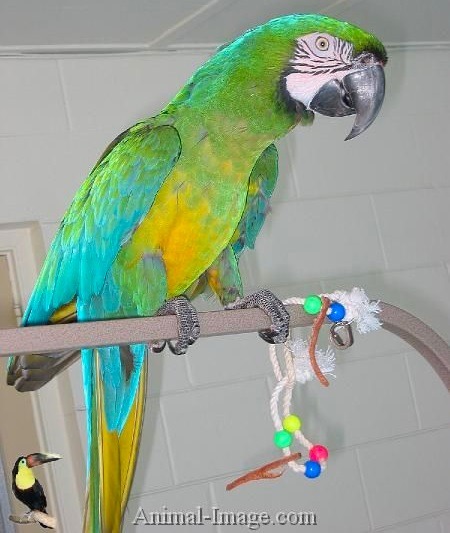
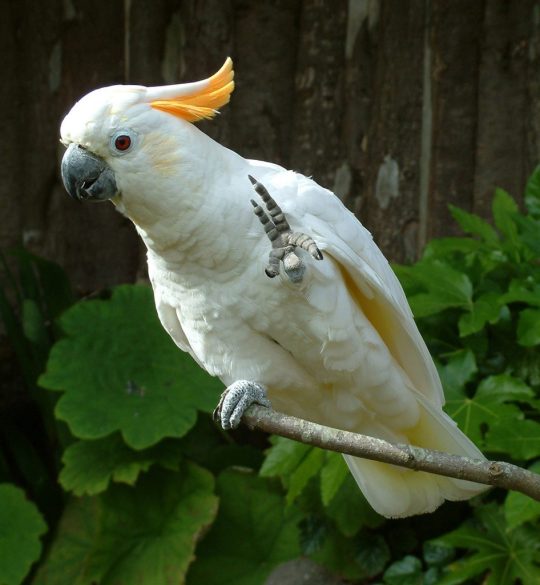
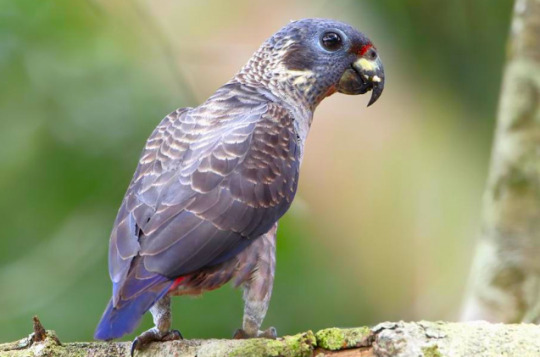
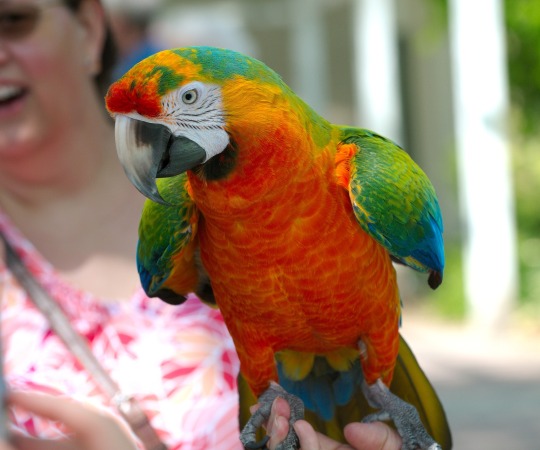

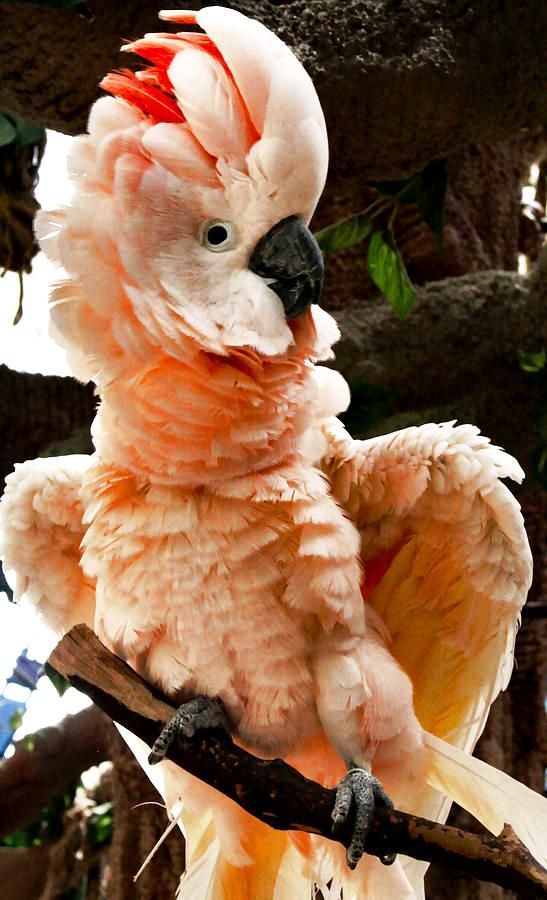

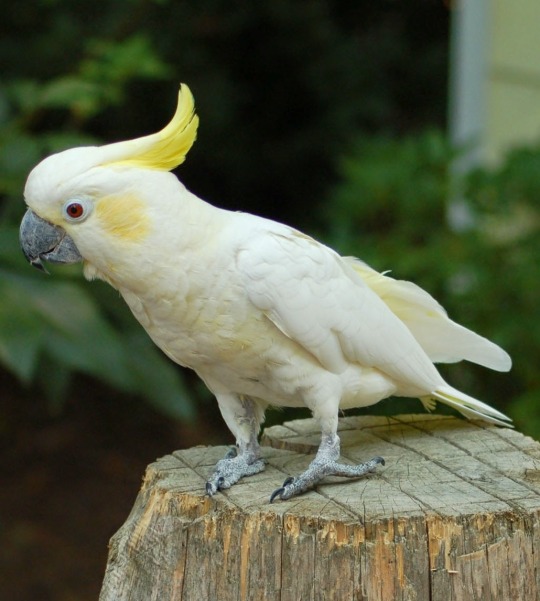

My Birdie Wishlist - no one is going to read all of this
Just for fun, here is my wishlist of birds parrots.
I made a collage last spring of all the exotic pets I wanted (most of which are gone now, as I realize with my limited time and resources, as well as living in Norway, I will have to stick to my favorites, namely parrots and reptiles), which had sixteen parrots on it, changing species on and off as I learned more and understood my wishes and abilities more.
(I do not want any more Poicephalus and they are not suitable with other parrots, I can never afford a €25k Palm cockatoo, I like some species but they have to be down-prioritized for various reasons, etc...)
I thought hell, lots of breeders and enthusiasts keep dozens of parrots in aviaries, sixteen is not that much? But I realized recently as I thought planned dreamed a little more, that I want to have a relationship with each bird, so I will have to keep my wishlist to under ten birds. (Also, I already have two, though they are middle-aged, they have probably 10-20 and 20-40 years left, respectively.)
So these nine ^ are what came out finally.
Miligold (military x B&G macaw), Citron-crested cockatoo, Dusky pionus, Camelot macaw (75% Scarlet, 25% B&G), Hawk-headed parrot, Moluccan cockatoo, Bronze-winged pionus, Lesser sulphur-crested cockatoo, and Golden conure.
I also have a soft spot for the Alexandrine, especially the new lutino mutation (which is actually a hybrid with the Indian ringneck). It sounds shallow but I love yellow birds and I will pick the one that has a better suited temperament, also the Golden conure is endangered so I don’t know if it should be considered unethical to keep them as pure pets. (And €2000 is a pricey little conure. Hardly any of the other birds cost that much.)
Also I may want a white-bellied caique again instead, as my Pumpkin sadly got a wasting disease and died, and he was an amazing little puppy. :(
Cockatoos have an unfair reputation, in my opinion. Yes they are special and yes they are high-maintenance, but I find a lot of parrot people just can’t stand cockatoos, or fear them. (I on the other hand, am that way with Poicephalus and Amazons. XD They scare me.)
I love the flashiness and sugar-high toddler personality of the cockatoos. With these three (or just the first two, we will see), I will only get females as young birds, and raise them with the flock. Males are far more unpredictable, and some turn out as killers of other birds.
(Also I love the red-tailed blacks... and there is a breeder in Norway that sells them for about €3k. But it is a very special bird that would need careful planning. My favorite is the yellow-tailed, but they cost some €25k per bird.)
Hawk-heads also seem to have a strange reputation online, that got spread like “I heard someone said that someone read that they can be really mean”, while when you read from first-hand experience, they seem like any normal South American parrot (their closest relative is the caique).
I have owned sulphur-crested cockatoos and a scarlet macaw before, but that was when I was 15-21 years old and living in an apartment. A completely different life situation, and even a different person who owned them. I am now nearly 30 and won’t be able to build this flock up for quite a few years yet. Maybe I will have the two Pionus in 2-3 years.
I will be making an entire building for these, by the way. I love cockatoos, but not indoors 24/7. XD Especially as they’re the only parrots that regularly scream in the dark. Because they don’t want to go to bed. (And 100 other reasons. Many animals are lovely to interact with, but very difficult to keep inside the home.)
I have heard a bit of iffy things about pulmonary problems in macaws from being kept with toos and greys, especially the B&Gs (theorized to be due to their bare nostrils), and both of these are B&G hybrids. Some terrible stories, some have kept them together for decades with no problem (rescues/sanctuaries especially).
I will probably keep the macaws separate in their own smaller indoor aviary, in another room, but let them share space with the other birds outdoors, and go out to the main area for enrichment, but keep it very clean and dust-free, and the macaws would be in their own air-space for 18+ hours per day.
I have made a lot of videos, articles and lengthy annoying forum posts against hybrids and the pet parrot trade in general between 2008-2014, but I have changed in my beliefs a lot since then. So in case you stumble upon my videos... know that I don’t stand by them anymore, but I am leaving them up.
5 notes
·
View notes
Photo
Well this is a very wholesome post to be highlighted.
Bronze-winged pionus are on my future birb-list. I want a bronze-wing and dusky together. ^_^
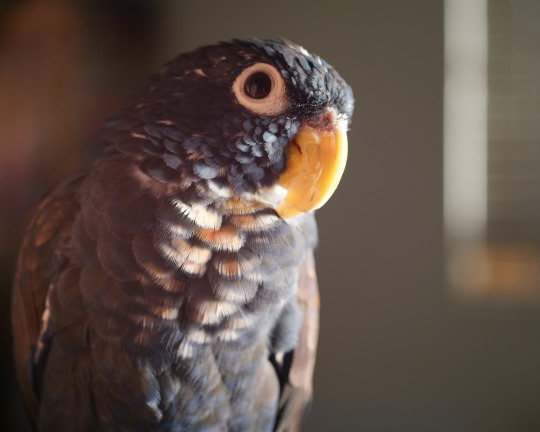
what r we doin?
3K notes
·
View notes